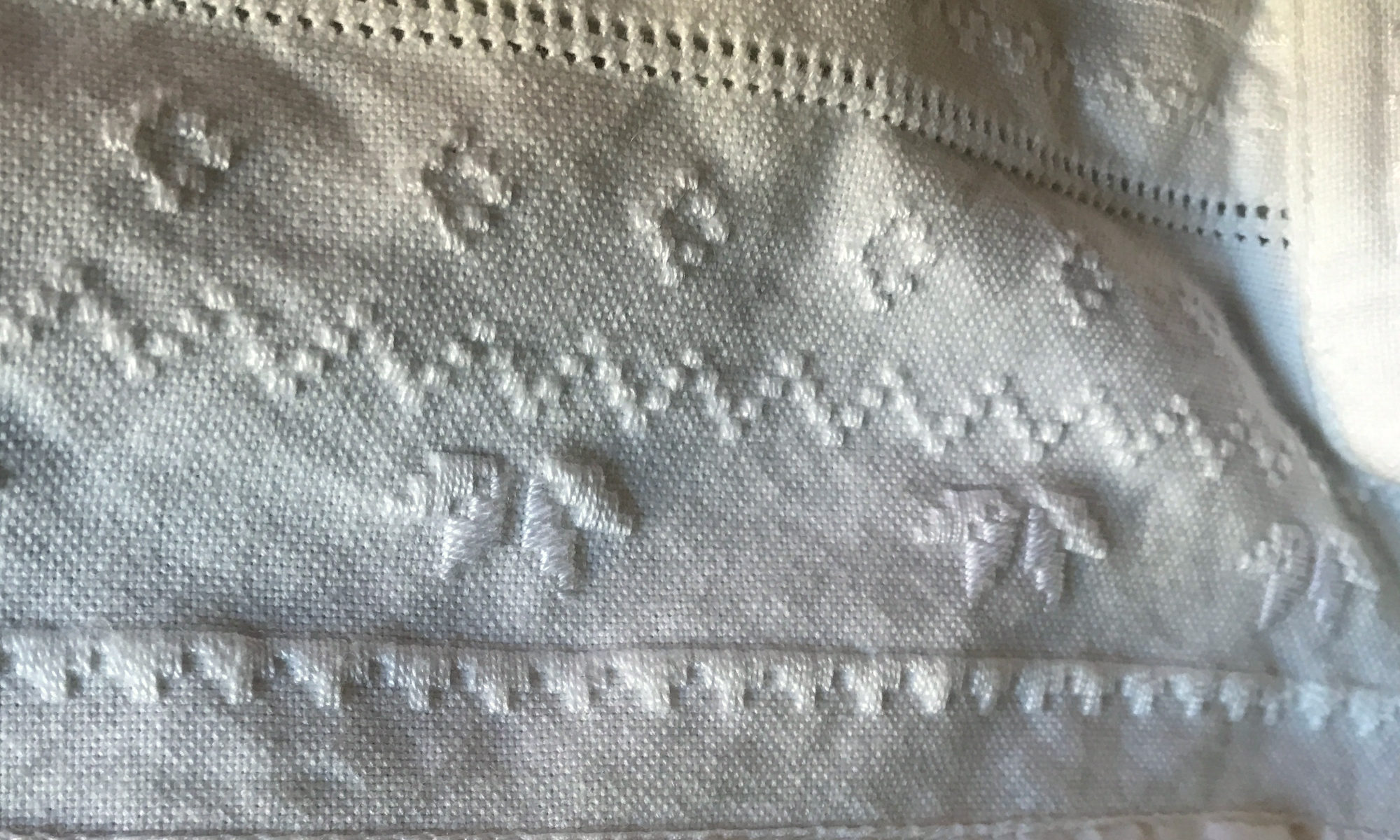Both this article and this exercise may be “too long” for most people!
Want to appreciate someone you may have never before considered?
Take something apart.
I’m not kidding. This is an important lesson, especially if you’ve never made anything by hand.
If you have never whittled, worked with wood; sewn, worked with fabric; welded, riveted, worked with metal; or made something by hand—then take something apart. Carefully, methodically, and thoughtfully, undo all the pieces of something that a person used their hands to make.
A shirt, for instance.
Find a (discarded) well-made, long-sleeve collared dress shirt, preferably of 100% cotton. Get a seam ripper or Exacto knife, and set aside an hour or two.
You’re NOT to destroy the shirt by shredding it to pieces — that would entirely circumvent the point of this exercise.
Study the shirt, and with the seam ripper, carefully and methodically undo each seam, each stitch, each button, and each label. As you take the shirt apart, lay each piece of the shirt on a table. You’ll probably find there are more pieces than you realized, more seams than you imagined, and wonder how in the world someone stitched all those pieces together. Or even figured out how to design and cut the pieces so they fit together perfectly.
That’s getting to the point of this exercise.
As you take the shirt apart, consider the pieces. How were they sewn together? How were the pieces of fabric cut before they were sewn together? Look at the little edges folded under — consider the dexterity of the fingers that folded the fabric so precisely. The skill of the fingers that guided the fabric through the sewing machine, fingers next to the needle going up down fast fast fast so fast that needle-hole marks punctured too-close fingernails.
If there’s a pattern to the fabric, does the pattern match where the seams fasten together different pieces of fabric? What kind of skill did that take, to cut and to sew and to design the shirt so the patterns matched across fabric pieces?
Can you easily get the seam ripper in between the individual stitches of the collar? Can you even see the stitches? Think of the person sewing the collar — what would their eyes feel like at the end of the day, after making the shirt?
What about the buttons? The placket? Do you even know what a shirt placket is? Or the yoke?
Don’t give up. Don’t put the shirt down and forget about the exercise.
Think about the person making the shirt. They didn’t put it down and give up on making it.
Finish taking the shirt apart. Your taking it apart was easier than their making it — and you probably never thought of who made your shirt before, or the skill, the time, the difficulty of making it.
Yes, the shirt you take apart was probably made in a factory, by several people, each sewing a particular part. But years ago, a tailor, or your mom, would have made the shirt for you, to your specific measurements, stitching each piece at their machine. Even further back in time, they would have stitched entirely by hand, without a sewing machine.
The hours, the abilities, the love of the tailor or mother for their craft: So much once went into the making of a shirt, and were valued by the shirt’s owner and wearer.
Now, the maker of the shirt is too often lost, a faceless factory-worker who has become, like the shirt itself, a commodity to be discarded.
And you — the wearer of the shirt — feel this lack of care just as much as the anonymous maker of the shirt, but you probably don’t have words for the sensation. Blinded by labels and advertising, fashion and merchandizing, clothes-wearers pay for expensive brands, yet feel a lack of . . . something.
The “something lacking” is NOT a new fashion, not a replacement shirt, not a different brand shirt.
The “something lacking” is the spirit of the maker.
Mass-produced items don’t have the same anima, the same spirit, as a handmade item.
Items made with care and love bear the spirit of the maker. Mass-produced items bear the ghost of industrial production, the shell of spirit.
We feel this, yet most can’t name what’s missing: the anima of the item and the spirit of its maker.
We’ve discarded them.
###
Posted on Mother’s Day with much love and appreciation for my mom, a master seamstress who made, among other things, many shirts for me, and fostered my appreciation of the handmade and hand-makers.
The photo is of a handmade shirt by Angelina Pirastu of Samugheo, Sardinia, Italy. I’ll be writing more about her and the costume soon!

